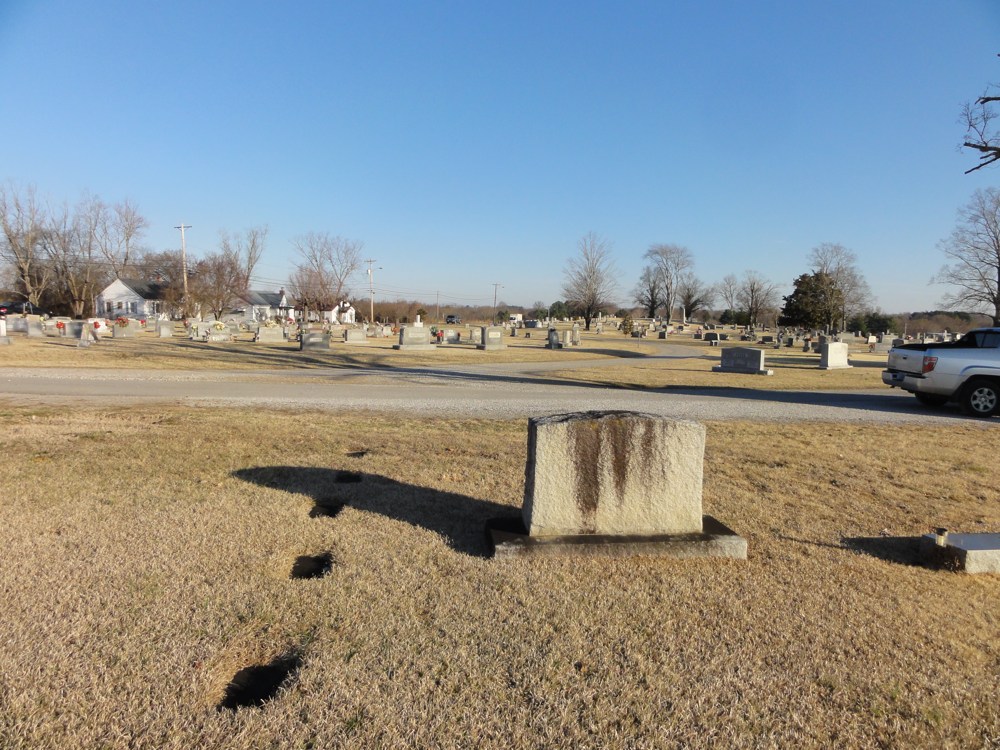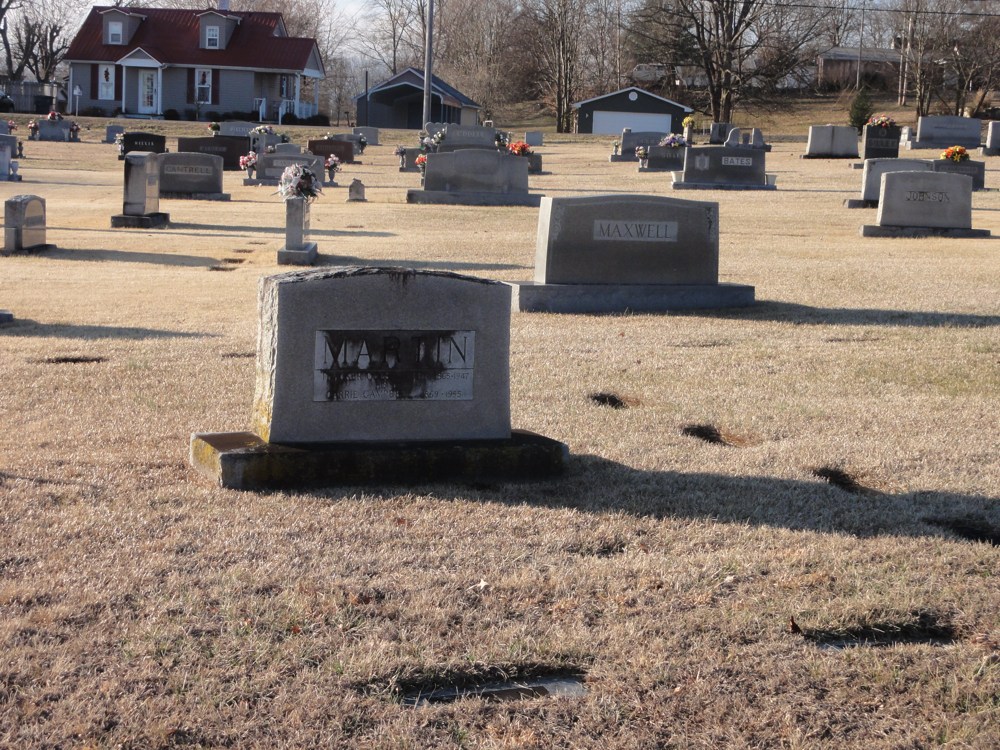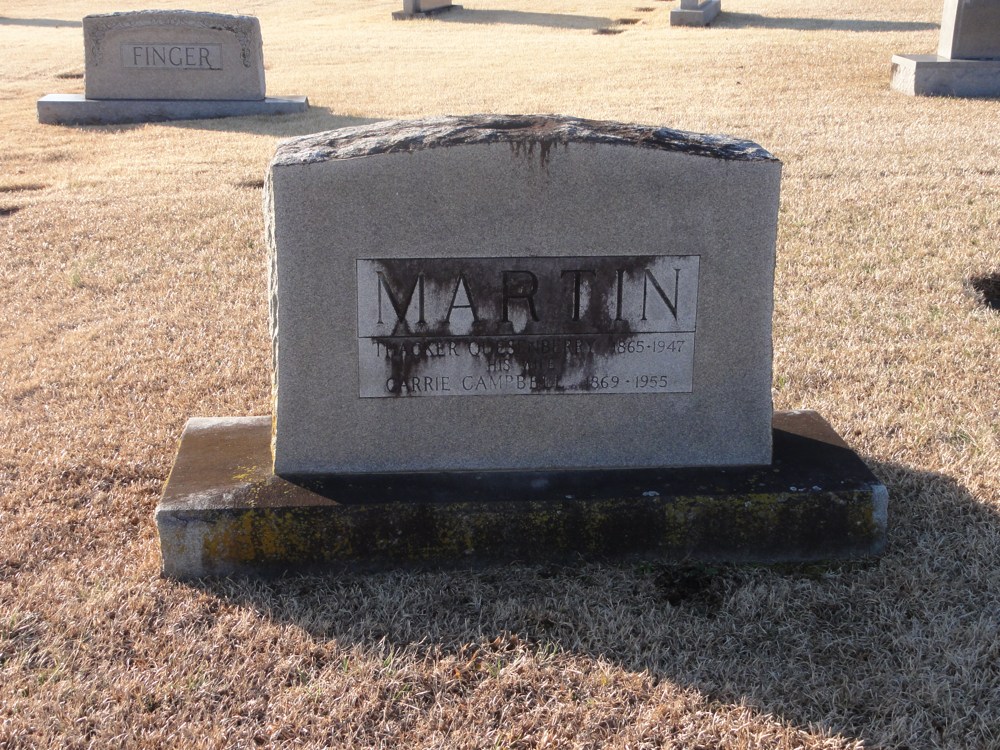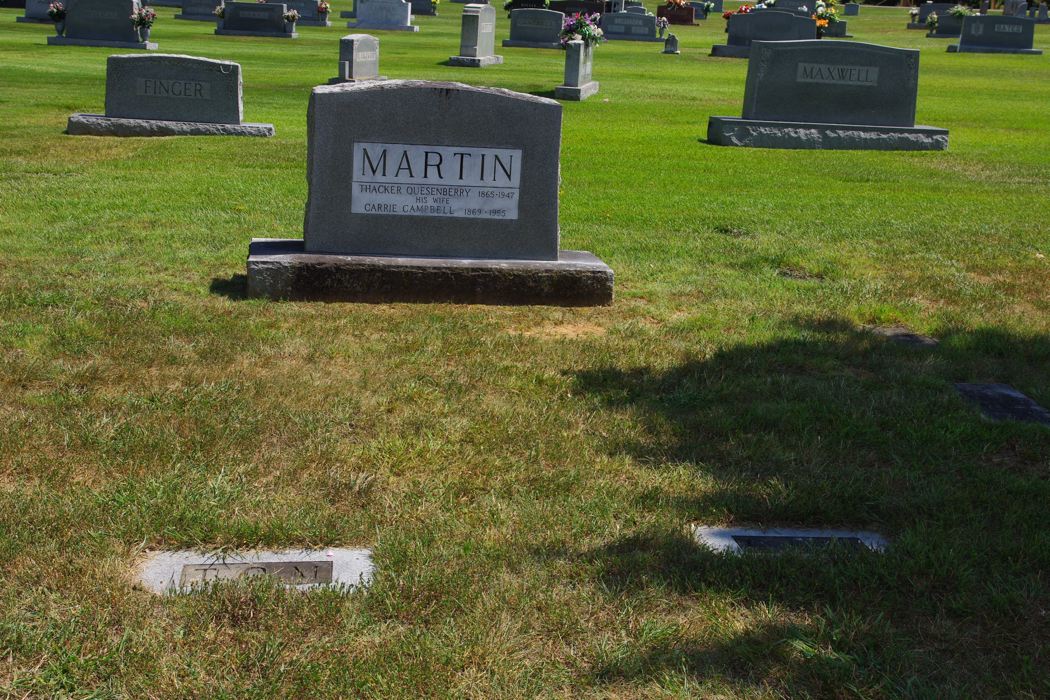Thacker Quesenberry Martin
1865-1947

![]()
T. Q. MARTIN: LIFE AND WORK
One of the truly great giants of the first half of the twentieth century was T. Q. Martin. His influence on my own life was particularly great, and I know many others who were equally influenced. I knew him not so much as a friend but as a hero.
Thacker Quesenbeny Martin, shortened to T. Q. (which he often jokingly stood for "Two Quart") was a great preacher, teacher, writer, and devoted Christian. It is unfortunate that much of his greatness has escaped us due to the fact that the sources of his life and work are limited. The major sources of his life are: a short biographical sketch by Earl West in Sermon Outlines of T. Martin, edited by Morris M. Womack; newspaper clippings from places where he worked; references in religious papers (Christian Leader and Gospel Advocate); church bulletins from Central Church of Christ: memories from those who knew him; and a little booklet dictated by brother Martin shortly before his death.
We shall address our discussion of Brother Martin under three headings: The Life of T. Q. Martin; His Preaching and Writing; and, The Influence and Impact of T. Q. Martin.
LIFE OF T. Q. MARTIN
Thacker Quesenbeny Martin was born on August 17, 1865, in Clark County, Kentucky, of Willis and Many Lutitia Ryan Smith Martin. He knew very "little of his remote ancestor's and he has often felt little concern about his own family tree, or that of anyone else. Our ancestors neglected spraying," he wrote. (T. Q. Martin, Life and Experiences, p.11).
Brother Martin's mother was first married to Solomon "Sol" Smith. Sol was publicly hanged for killing his father in an argument of very little consequence.
Willis Martin, some believe out of sympathy, soon married Mary Smith. Brother Martin referred to "Sol" as "the Ghost in the Closet in the Martin family."
"Sol" and Mary Smith had a daughter. Ellen, whom Willis helped to raise. T.Q. and nine other children were born to Willis and Mary; however brother Martin said that "the partiality of my father was so prominent that I, as a child, easily discerned it. Stranger still, all the children were likewise partial to Ellen. . . She was the sweetest, gentlest. and most considerate of others, of all of the young women I have ever known" (Martin, p. 12).
The Martins were poor, but hard-working people. When T. Q. was still a "babe in arms," his parents moved from the old "Joe Deacon" homestead to an unfinished house on a piece of land that Willis bought for $125.00. Willis died while T. Q. was a young boy, and it became his responsibility to help his mother in the support of the family. He would pick up and deliver clothes for his mother to wash and iron, hold "hanks" of yarn for his mother to wind into balls for knitting, churn milk for the neighbor in exchange for buttermilk for the family, and did any other odd jobs he could find. He was often given delicacies which he took home for his family, and as he approached his 81st birthday, he looked back "with happy memories upon these efforts to be unselfish" (Martin, p. 13).
T. Q. worked for fourteen years in lumber and farm work. While working at a sawmill in Ford, Kentucky, in 1889, he began preaching. In the fall of 1889. the 24-year old man entered the College of the Bible in Lexington, Ky. He was sick frequently, but he finally graduated in 1895. He often spoke lovingly of J. W. McGarvey, although he took only one class from him.
On October 2, 1894, he manied Miss Elizabeth Rutledge. Three daughters. Nancy Sue, Anna Clay and Christine, were born to them. Anna died in infancy. When Elizabeth died, brother Martin was mamed to Carrie C. Lillie, who stood by him until death parted them. She ministered to him faithfully and untiringly until his death.
Brother Martin was a writer, editor, minister and dedicated Christian. It is significant that his great friend and co-writer, F. L. Rowe, died the same year and the Christian Leader devoted an entire issue to the "memory of the Editors," Rowe, and Martin. Brother Martin lived long enough after his good friend "Fred" that he wrote a memorial to him which was printed in the joint-memorial issue.
The Monthly Caller of the Central Church of Christ had the following two paragraphs regarding T. Q. Martin's death: On Tuesday morning, June 17th about eight o'clock the gentle spirit of Bro. T. Q. Martin quietly slipped away from the earth. He passed away at his home in McMinnville, Tenn. The whole town was shocked at the news, even though it had heen expected, and a pall of sorrow settled over the whole community. The summer day lost its luster for those who knew and loved Brother Martin so long; and to know him was to love him.
Death brought to an end several years of illness and the feebleness of illness and age had forced a period of retirement. The last Lord's Day of his life he was able to attend the services at Central and led the prayer in a smng voice and with the earnestness and humility which was ever characteristic of him . . . . (Monthly Caller, July. 1947).
The influence of Brother Martin was so deeply felt in Warren County, Tenn. that the mayor declared a holiday and requested that all businesses close the afternoon of the funeral. He was buried in the Mountain View cemetery where he had selected the plot. The funeral services were conducted by Otis Hammer, John W. High and Allen Phy. N. B. Hardeman led the prayer. Many messages from dignitaries-including Governor McCord, Congressman Estes Kefauver and B. C. Goodpasture were received and read at the funeral.
PREACHING AND WRITING
Brother Martin was a great preacher; this was the joy of his life. It was said of him, As a preacher Brother Martin ranked among the greatest of his time. He was absolutely true to the Bible, uncompromising in his devotion to truth and withal kind and gntle always. He had a strong sense of humor and was highly emotional. His audiences laughed and cried with him as he held their rapt attention and broke to them the bread of life (Monthly Caller).
Brother Martin was offered the opportunity to be a professional entertainer, but he became a preacher. He was so effective in making audiences "emote" with him that I have often been asked if he had "laugh here" or "cry here" on his sermon outlines, which, of course, he did not.
T. Q. Martin did "local work" for only three churches: Sellersburg, Ind., 1911-1913; St. Marys, West Virginia, 1917-1929; and, Central Church in McMinnville, Tenn., 1929-1947. He was retired a year or two before his death with life-time support. He taught at Potter Bible College in Bolling Green, Ky., immediately after graduating from College of the Bible. For a year, he served as president of Western Bible and Literary College in Odessa, Mo.
Bro. Martin wrote many articles for religious journals, primarily for the Christian Leader and Gospel Advocate. He spoke for several of the Christian College Lectureships. His preaching took him into 22 states, the District of Columbia and the Dominion of Canada.
INFLUENCE AND IMPACT OF T. Q. MARTIN
Only in eternity can our influence be evaluated. However, brother Marlin's influence for good was felt wherever he went. None doubted what he believed or what he meant. He was a dedicated soldier of the cross, and his sermons were biblical to the last word. He loved God's word.
Each year, brother Martin carefully marked a Bible and presented it to someone. One of the writer's wishes was to receive one of these Bibles, but he was never so blessed.
T. Q. Martin, along with other preachers in McMinnville, often visited the Central High School for chapel services. The writer well remembers some of the appearances of brother Martin. The students loved him; he loved the young people. His visit was always well received, as I now recall.
The following statement summarizes some of brother Martin's thoughts about his life: There are many, many things that I should love to leave on record, but I am weak and frail and with an earnest prayer to God that what is said in this little booklet may be a blessing to every one who leads it. I continue a little further. I feel now that if the impossible could happen, that is, I could begin my life as a preacher with the experience of nearly fifty-eight years with congregations and people, I could make my life worth more to the Church than ever it has been. But, I feel that little as I have done, I have not lived in vain, for my dear Heavenly Father has accomplished through me, his unworthy instrunlent (Martin. p. 41).
Earl West sums up T. Q. Martin's qualities in these beautiful words: "Brother Martin ranked among the best preachers of his time. His services were continually sought after. He was earnest yet humble, and a man of strong emotions.
He never 'lost' his audiences. They laughed with him through his remarkable wit, and more frequently, wept with him through his melancholy stories. Bro. Martin loved the truth with wholehearted devotion. He has left a rich and enviable heritage to the scores of young preachers who will yet follow him." (Earl West, "T. Q. Martin: Servant of God," in Sermon Outlines of T. Q. Martin, by Morris M. Womack, p. vi).
-Morris M. Womack, 1986 FHU Lectures, pages 362-365
![]()
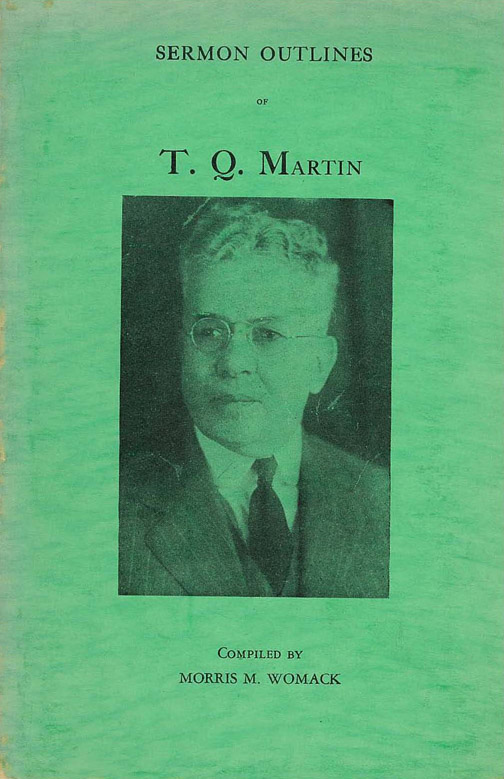
Sermon Outlines Of T.Q. Martin
Compiled by Morris M. Womack, 1953
![]()
T.Q. Martin-Servant of God
The spirit of T. Q. Martin quietly slipped across the "great divide" on Tuesday morning, June 17, 1947, the aged saint departing this life only a few weeks short of his eighty-first birthday. Congressman Estes Kefauver sent the following word to the family: "l was distressed to learn of Dr. Martin's death and want to extend my sincere sympathy to you and your family in your bereavement. His passing is a great loss to the community and he will be missed by his many friends.... "Missed by his many friends" he was, for sixteen years of faithful service with the Central Church of Christ in McMinnville, Tenn. had given Brother Martin the opportunity to wield a great and good influence in the community. But beyond the geographical area of McMinnville the weight of Brother Martin's life was also heavily felt. B. C. Goodpasture's words on the occasion of Brother Martin's death are singularly felicitous: "Brother Martin was one of the great and good men of this generation. The church can ill afford the loss of such a good man, but his work and influence will live after him to bless the thousands that knew him."
The story of Thacker Quesenberry Martin begins in Clark County, Kentucky on August 17, 1865. These were the dark and "sanguine sixties," as Larimore frequently called them. The war between the states was over, but its bloody saga would be told and retold, and each time the frightful yarns would become more perturbing. Martin was one of nine children born to Willis F. Martin and Mary Lutitia Ryan—all the others were girls. His great grandfather had moved to Clark County from Ireland, leaving no doubt about the source of Martin's Irish wit.
His mother had been previously married to a saddle-maker in Clintonville, Ky. by the name of Smith. Smith himself had been married before. When, therefore, he and Miss Ryan joined in wedlock, Smith had two children—a boy named Solomon and a girl by the name of Bell. Solomon, a pertinacious youth, became angered at his father in an argument over a new saddle and shot him. Later Solomon was tried and hanged for murder. Willis Martin witnessed the hanging, but he was also observant of the young widow standing nearby, sobbing in doleful anguish. If it were pity that first attracted her to him, it is certain that this soon ripened into love. At any rate, they were shorly married.
T. Q. Martin was born on what the family affectionately called "the old Joe Deacon" homestead. Life with such a large family was far from easy for Willis Martin. It became necessary for his wife to take in washings and do other odd jobs to help earn enough to buy bread. T. Q., by the age of seven, would go to the neighbors, pick up the dirty clothes, and return them when his mother had washed them. He churned for a neighbor lady, and for his effort was rewarded with some buttermilk to take home to his family. T. Q. Martin's father died while Brother Martin was yet a boy, and heavy responsibilities soon fell upon him.
In these early days Brother Martin made the friendship of "Cousin Billy Bush," an old bachelor and fiddler who often visited his home. Young Martin took care of Billy's horse, and Billy soon liked T. Q. He once told Brother Martin that if he would come and live with him, he would buy him a farm, and will it to him, and send him to school and college. But this generous offer was understandably refused.
In 1889 Martin was working at a sawmill when he conceived the idea of attending the academy at the College of The Bible. He was admitted by I. B. Grubbs. During the four years he spent at the school in Lexington, he was able to take only one course under the renowned J. W. McGarvey. Later he was able to spend a year in the Nashville Bible School and study under David Lipscomb.
On October 2, 1894 he married Miss Elizabeth Rutledge. To this union three children were born-Nancy Sue, Anna Clay, who died in infancy, and Christine. After his wife's death, Brother Martin married again. His widow still lives as an invalid in a hospital near McMinnville, Tennessee.
Both the Gospel Advocate and the American Christian Review were coming to the Martin home when he was a small boy. The Advocate was then edited by David Lipscomb and E. G. Sewell, and the Review, by Elder Ben Franklin. Brother Martin read these papers from the time that he could read. He was early impressed with the value of religious perodicals that would proclaim the truth. For several years he was the editor of the Christian Leader in which capacity he was able to wield a wholesome influence up and down the Ohio Valley.
For five years Brother Martin taught school with James A. Harding at the Potter Bible College at Bowling Green, Ky. For one year, he was president of Western Bible and Literary College at Odessa, Missouri.
For the most part Brother Martin's preaching was done in evangelistic meetings in thirty-two states and the District of Columbia. However, he did "local work" from 1911-13 at Sellersburg, Indiana; from 1917-29, at St. Mary's Virginia, and from 1929-42 with the Central Church in McMinnville, Tenn. When he gave up preaching for the Central Church in McMinnville, it was because old age and bad health forced the action upon him.
Brother Martin ranked among the best preachers of his time. His services were continually sought after. He was earnest yet humble, and a man of strong emotions. He never "lost" his audiences. They laughed with him through his remarkable wit, and more frequently, wept with him through his melancholy stories. Brother Martin loved the truth with wholehearted devotion. He has left a rich and enviable heritage to the scores of young preachers who will follow him.
Nothing worthy of the name of a biography has ever been written of Brother Martin. A few months before he died he wrote down some material which was later published, but this is less a biography than a collection of reminesces. This booklet may still be purchased from his widow.
Brother Martin's funeral was held at the Central Church of McMinnville on June 19th. By proclamation of the mayor all business houses in the city were closed during the hour of the funeral. N. B. Hardeman led the prayer. Allen Phy, Otis L. Hammer, and John W. High made appropriate remarks in tribute to the memory of Brother Martin. The body was laid to rest in Mt. View Cemetery. On the occasion, Ben F. Taylor, himself a faithful preacher of the word and an intimate friend of Brother Martin, wrote the following: "A useful, well ordered life has been finished on earth and has gone to enter into that fuller life beyond. This is the sad fruit of mortality. But it is now a time not to think so much of darkness as of light; now we should think of life, not death; of day, not night. We thank God for the glorious resurrection to come. When slumber ends and death has lost every sting and the beloved redeemed can reunite forevermore."
The sermon outlines in this book have been collected and prepared for publication by Brother Morris Womack, minister of the Brightwood Church of Christ in Indianapolis. An expression of appreciation is due Brother Womack for the many hours of work he expended in this preparation. It is hoped these outlines will be of some help to those faithful servants of God, gospel preachers.
-Earl West.
-Morris M. Womack, Sermon Outlines of T.Q. Martin, Compiled by Morris M. Womack. The sketch above was written by Earl I. West, and the book was produced by West at his Religious Book Service in Indianapolis, Indiana in 1953. The book consists of 125 sermon outlines of T.Q. Martin.
Note From Webeditor: It is a pleasure to have a copy of this fine volume in my personal library.
![]()
Directions To The Grave Of Thacker Q. Martin
T.Q. and Carrie Martin are buried in the Mt. View Cemetery in McMinnville, Tennessee. The location of the cemetery is on the north side of McMinnville, but just south of the Bobby Ray Memorial Parkway, Hwy. 70S/Hwy. 1 Bypass. Head south on N. Spring Street. Go one block and the cemetery will be on your left. Enter the second entrance, (just before getting to Mountain St.) and turn left into the cemetery. Go to where the first road pealing off to the left and stop the car. Look back to your right for the Martin plot that should be closest to you.
GPS Location
35.695802,-85.766188
![]()
Some Photos Taken In February, 2014
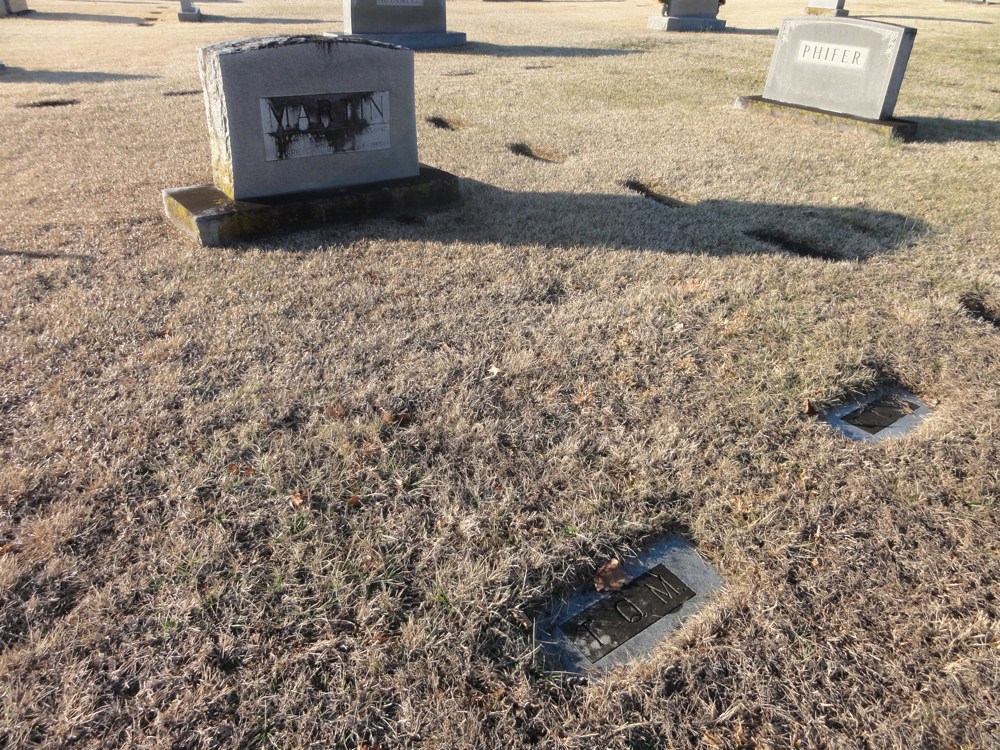
Martin plot to left of pickup truck
Some Photos Taken In 2010 By C. Wayne Kilpatrick
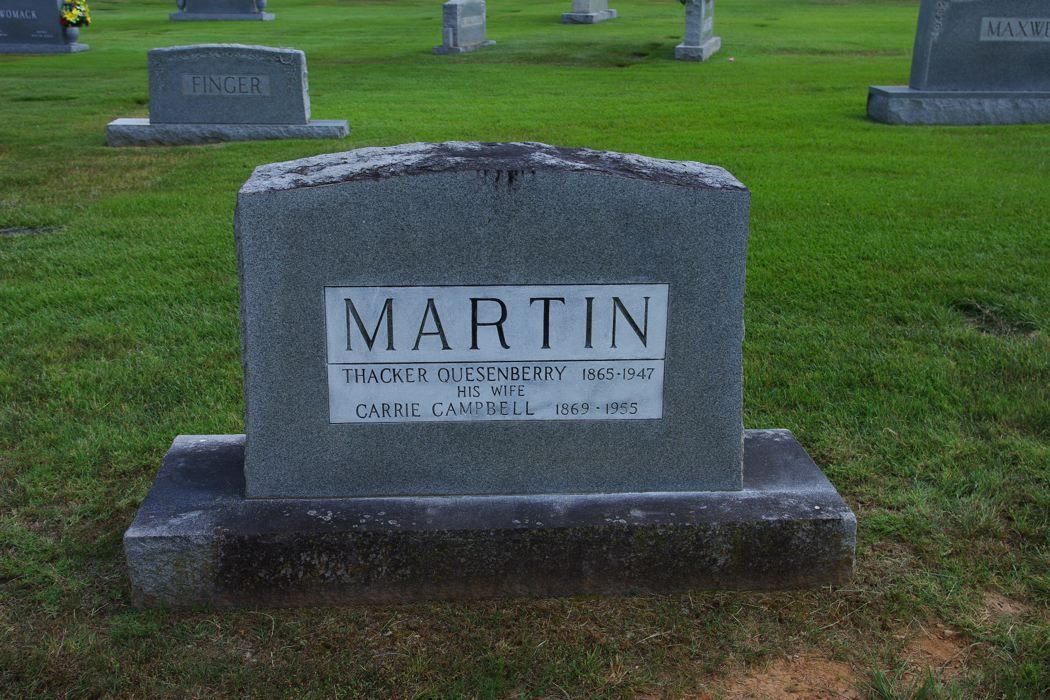
MARTIN
Thacker Quesenberry 1865-1947
His Wife
Carrie Campbell 1869-1955
Photo taken in February, 2014
![]()
Special Thanks
In May, 2010, Scott Harp, C. Wayne Kilpatrick and Tom L. Childers took a day and visited grave locations of Gospel Preachers of yesteryear in middle Tennessee. A great deal of time was spent in the Mt. View cemetery in McMinnville, searching for the grave of T.Q. Martin. The cemetery is not all that large, but for some reason the grave never could be found that day. Within weeks the location was discovered. Wayne visited the cemetery again in July, 2010 and found the grave, and took the pictures you see on this site. In the end, it seems we walked all around the monument but didn't see it in our May visit. Hidden in clear sight!! O well! Special thanks to Wayne for providing these pictures.
![]()

